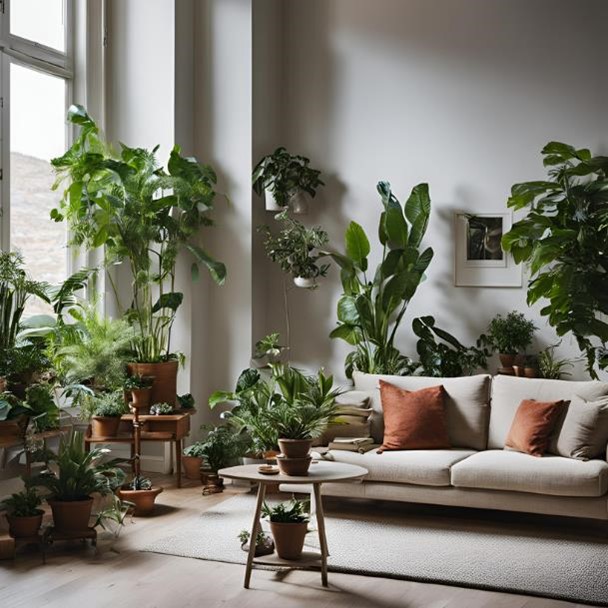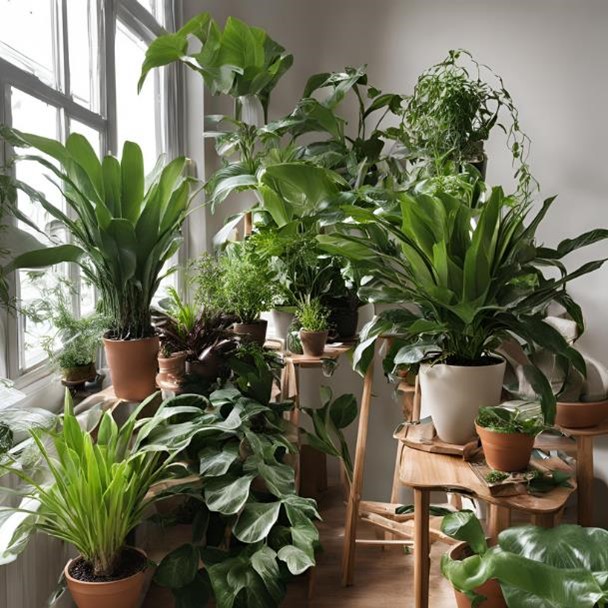Duration: 2 sessions of 45 minutes
Various factors in the indoor environment impact human well-being and contribute to a safe, comfortable, and healthy habitat. We will examine three important aspects: air quality, acoustic quality (noise), and the various materials we encounter indoors. By analyzing these aspects, we can understand how they influence our well-being and learn how to create an environment that promotes optimal indoor living conditions.
Learners will be introduced to the term “sick building syndrome” (SBS). SBS is a condition in which building occupants experience comfort and health effects that appear to be linked to time spent indoors.
A significant amount of our time is spent indoors, so it’s important to understand and improve our indoor well-being. Several factors can influence the well-being of individuals indoors, including the air, acoustic, and material quality of the indoor space.
Air quality: Poor air quality, caused by pollutants such as volatile organic compounds (VOCs like benzene, formaldehyde, toluene, xylene), chemicals, allergens, and mold spores, can lead to respiratory issues, allergies, and other health problems. On the other hand, good air quality promotes better respiratory health and overall well-being.
Acoustic Quality: Excessive noise levels in indoor spaces can lead to stress, sleep disturbances, difficulty concentrating, and decreased productivity. Creating a quiet and peaceful environment can enhance well-being and allow for better focus and relaxation.
Material Quality: The choice of materials in indoor spaces can have an impact on well-being. For example, using materials that emit harmful chemicals or allergens (such as paints, chemical cleaners, glues) can affect indoor air quality. Choosing natural and non-toxic materials can promote a healthier and more comfortable environment.
The surroundings in which we live can also influence indoor air quality. For instance, if an indoor space is located near a busy road or industrial area, it can be more prone to pollution and outdoor sources of contaminants. Proper ventilation systems and air filtration can help mitigate the impact of external air pollution on indoor air quality.
Sick Building Syndrome (SBS) is a condition characterized by unexplained illness or discomfort experienced by individuals in enclosed spaces, often caused by poor indoor air quality. It refers to a range of symptoms such as headaches, dizziness, fatigue, and respiratory issues experienced by individuals who spend time in a particular building. The occurrence of Sick Building Syndrome can be influenced by the environment in which individuals live, study, or work. Factors such as poor ventilation, indoor pollutants, high humidity levels, inadequate lighting, and lack of natural elements can contribute to SBS symptoms.

To improve well-being indoors, individuals can take certain measures such as:
Adding indoor plants can help improve indoor air quality and mitigate various concerns related to building pollutants and sick building syndrome. Here are some points to consider:
Air Purification: Certain plants (Snake plant, Peace lily, Dracaena, Aloe vera…) have the ability to absorb harmful pollutants from the air through a process known as phytoremediation. They can remove volatile organic compounds (VOCs) and other toxins, such as formaldehyde and benzene, which are commonly found in indoor environments.

Moisture Regulation: Plants release moisture through a process called transpiration, which helps regulate indoor humidity levels. They can add natural moisture to the air and prevent it from becoming too dry or too damp.
Natural Cleaning Alternatives: It’s important to be mindful of the chemicals used for cleaning indoor surfaces and floors, as many commercial cleaning products contain harsh ingredients that can worsen indoor air quality. Switching to natural alternatives, such as vinegar, baking soda, or plant-based cleaners, can provide effective cleaning while minimizing the release of harmful substances into the air.
Noise Reduction and Pollution Prevention: Planting evergreen trees near roads and buildings can act as natural barriers and help reduce noise from outside sources. These trees can also act as a protective barrier against excessive pollution, preventing pollutants from reaching indoor spaces.

Additionally, having greenery around can provide psychological benefits by fostering feelings of relaxation, well-being, and connection to nature.
The purpose of this lesson is to present a fresh perspective on our daily indoor environments and emphasize how they can affect our quality of life and well-being.
It aims to educate students about the importance of indoor well-being and the different ways to improve it. This includes raising awareness about Sick Building Syndrome (SBS), its symptoms, causes, and methods to reduce risk factors.
In addition, the goal is to illustrate the impact of poor indoor air quality on individuals and underscore the importance of incorporating indoor green spaces to eliminate and prevent SBS.
Plants for prevention of SBS / Poster making
Here you can find nuggets that can help you implement the lesson.